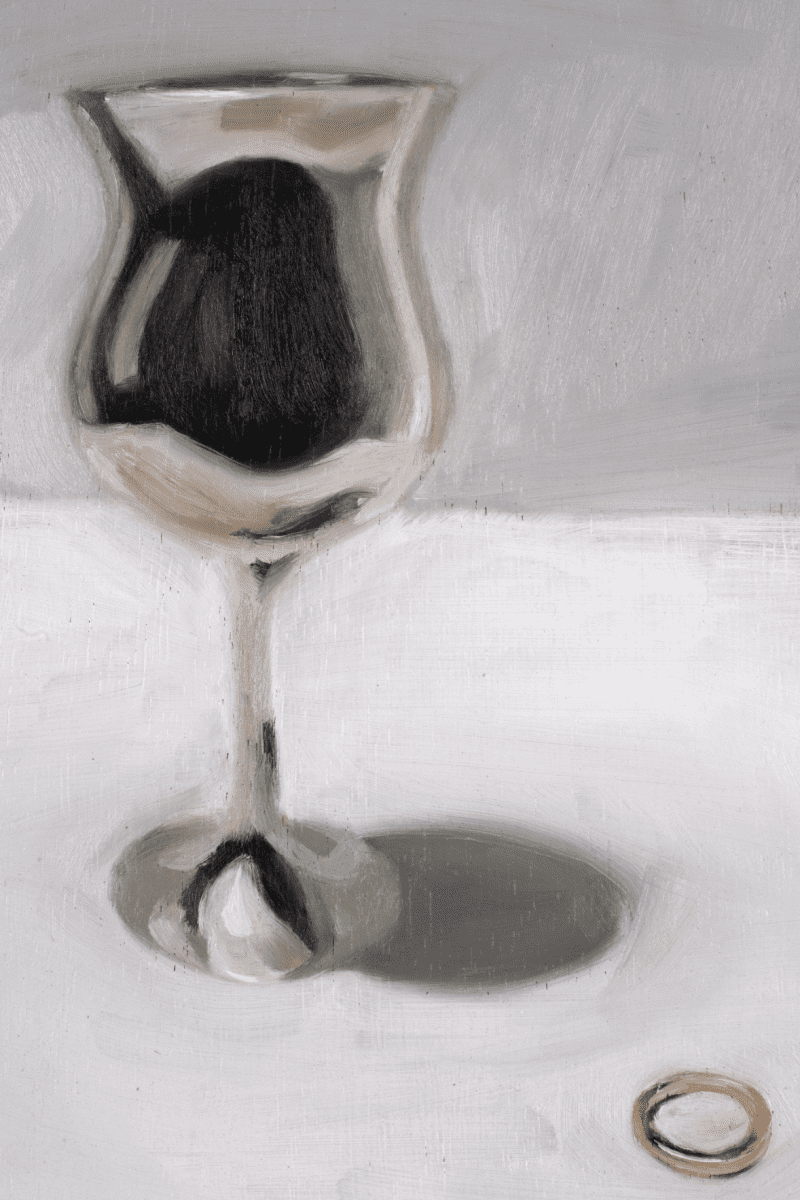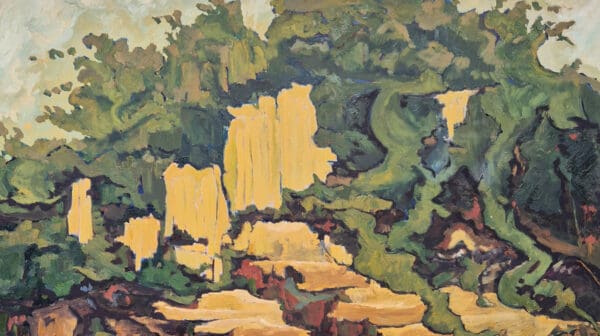The practice and philosophy of journaling, diarising and chronicling is at the heart of Alexander Okenyo’s Amor Fati. The show, made up of small still life works and large ‘text paintings’, can be regarded as a series of time capsules from Okenyo’s life as he negotiates the art world, family, the pandemic, and his community in the Derwent Valley of Tasmania.
‘Amor fati’ translates as ‘love of fate’ or ‘love of one’s fate’—a concept that fascinates Okenyo as it has been interpreted by the Stoics of the third century, as well as Friedrich Nietzsche in the late 19th century. “The philosophy allows me to understand myself less as an artist, and more a record-keeper, a note-taker,” he says.
“I am enamoured of diarists like Helen Garner, whose notebooks have given her a place to record the experience of life to herself . . . You see her vacillating between subjects micro and macro—politics, mortality, the state of her city, her street, her family, the kitchen table.
“I’ve thought this is what I’m doing too—this is the role painting plays in my life. I’m keeping a record and developing my thoughts, not for the paintings’ sake but for me to live the best I know how, and crucially, to navigate the state of things as they are—to love one’s fate.”
Okenyo, whose work is held in collections across Australia, says he has experienced a “renewed passion for the still life, the domestic object, and the rejection of pictorialising broader global themes.” He does, however, embrace a more worldly, less domestic context with the text paintings. Yet even in these there remains a thread of personal existential enquiry. “Questions of the meaning of art-making, the value of the practice, and my relationship with the time left to me, all steer my focus.”
Amor Fati
Alexander Okenyo
Bett Gallery
18 March—9 April
This article was originally published in the March/April 2022 print edition of Art Guide Australia.











